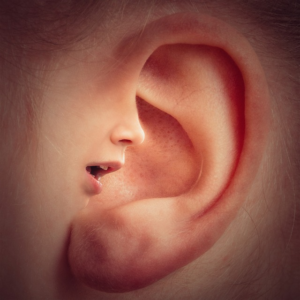Auditory Neuropathy Causes Hearing Loss

Auditory Neuropathy Causes Hearing Loss
Auditory neuropathy is a very uncommon type of hearing loss. It is produced by disrupting nerve signals traveling from the inner ear to the brain. There are no known causes, and there is no cure.
Hearing loss ranges from mild to severe when both ears are afflicted. Auditory neuropathy is often known as neural or nerve deafness.
In certain circumstances, affected persons can hear but struggle to understand spoken words, particularly in busy environments. Hearing aids or cochlear implants can help you hear and understand what you’re saying better.
Auditory neuropathy symptoms might vary; as a result, a person’s hearing may improve or deteriorate. The long-term forecast differs as well.
For example, a person with auditory neuropathy’s hearing may improve, deteriorate, or remain unchanged, and there is no way to forecast the outcome.

Auditory Neuropathy Symptoms
Auditory neuropathy symptoms vary from person to person and can fluctuate. Symptoms could include:
hearing loss ranging from mild to severe
Sound effects that fade in and out
difficulties understanding what is being said (speech perception)
hearing is normal, but speech perception is poor
Speech perception deteriorates in noisy surroundings.
Many of the symptoms of auditory neuropathy are also caused by other types of hearing loss.
How Are Sounds Perceived?
The following structures are involved in hearing:
The visible section of the ear is the outer ear. Through the outer ear, sounds are conveyed to the middle ear.
It is the membrane that separates the middle and outer ear. In response to sound waves, the eardrum moves. Tiny bones in the middle ear magnify the movement.
Inner ear: The enhanced sound waves are picked up by the cochlea, a tiny spiral-shaped organ.
The vibrations are picked up by tiny hair-like nerve endings in the cochlea, which convey the message – converted into electrical impulses – to the cochlear nerve.
Brain
The impulse is transported through the eighth cranial nerve by the cochlear nerve to auditory pathways in the brainstem. The brainstem, located near the base of the skull, is regarded as the “bridge” between the brain and the spinal cord. The brain interprets electrical signals, and sound is “heard.”
What Factors Contribute to Auditory Neuropathy?
Some ear structures may typically work in auditory neuropathy, but information from the ear may be corrupted when it goes to the brain. The etiology of auditory neuropathy is unknown; however, researchers assume that a variety of variables, including damage to:
the inner ear’s hair cells
the connections between hair cells and the cochlear nerve
cochlear nerve
the cranial nerve no. 8 (the combination of the cochlear and vestibular nerves)
auditory channels in the brain stem
Auditory Neuropathy Diagnosis
A variety of tests are used to identify auditory neuropathy, including:
Auditory Brainstem Reaction (ABR).
Brain wave patterns are recorded using electrodes on the ears and head when a person is exposed to a sequence of sounds. A person with auditory neuropathy usually has little or no response.
Otoacoustic emissions (OAE) – a tiny microphone is put into the ear canal to examine the function of the cochlea’s hair cells.
If they are, the microphone detects the faint sounds made by the hair cells as they respond to the stimulus. A person with auditory neuropathy usually has some functional hair cells.
Other hearing tests, such as speech recognition, are available.
When tested with background noise, a person with aural neuropathy generally performs poorly.
additional examinations
we need to rule out all other possible causes of the same symptoms. such as multiple sclerosis
Auditory neuropathy treatment possibilities
Auditory neuropathy is incurable. Because of the varied nature of this hearing condition, some treatments work in some cases but not in others. Unfortunately, no tests can predict whether a particular treatment will be effective or not; instead, the patient and their hearing healthcare practitioner must experiment to find out.
Auditory neuropathy treatment options include:
Cochlear implantation
A surgically implanted device that stimulates the inner ear nerves. Many patients have reported that these implants have improved their capacity to hear speech.
FM (frequency modulation) systems
A wireless receiver and headphones that amplify sounds without the use of wires.
Hearing aids are devices that magnify all sounds. Hearing aids are not particularly useful for persons with auditory neuropathy in general.
Communication abilities for those suffering from auditory neuropathy.
The medical profession is divided on how to teach youngsters with auditory neuropathy to communicate. Some propose teaching the child sign language, while others favor fitting the child with gadgets (such as hearing aids) and assisting them in learning to hear and talk.
Some medical specialists believe that a mix of both techniques is preferable because it is impossible to predict whether the child’s hearing will improve, remain unchanged, or deteriorate.
Exposure to spoken language is vital if the child’s hearing improves. Adults with prior experience with spoken language may benefit from learning to use complementary signals such as lip-reading.





